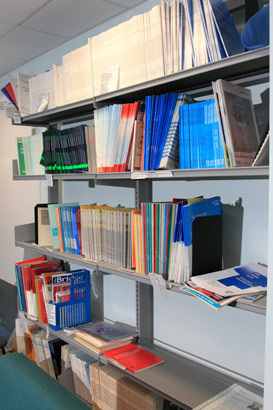
This section is to be read in the context of the introduction to safeguarding at Level B.
It does not form part of a systematic review of safeguarding
within this module (which is the requirement of statutory safeguarding and
child protection training), but raises additional relevant issues related
to personal care.

The general legislative context for safeguarding
disabled children is the same as for all children. The same principles
and the same duties apply, whether a child is disabled or not.
Murray and
Osborne, 2009
People with learning disabilities have the right to be protected from situations that leave them vulnerable to physical, emotional, or sexual abuse or exploitation by others. Carers have the right to know that there is appropriate protection to ensure the 'safety' of the person they care for.
[In Safeguarding Children and Young People from Sexual Exploitation]
the DCSF noted that...education staff should be able to
identify signs that a child
or young person is at risk of or suffering sexual exploitation, and know what action to take in line with local procedures.
Ubido et al, 2009
For those [children and young people] who are unable to verbalise victimisation,
practitioners should be alerted to the possibilities of abuse when children
with disabilities demonstrate alterations in bowel and bladder patterns,
appetite, sleep, mood, or behaviours or seem less willing to engage in
community participation.
Murphy and Young, 2005
sex education

Parents and health care providers may react to
the fears of sexual abuse by protecting children with disabilities from
unsupervised social contacts, thereby inadvertently denying them critical
opportunities to develop social skills and appropriate personal boundaries.
Because some caregivers may fear that talking about sexuality will promote
sexual behaviour, children with disabilities are often sheltered from
sexuality education. The available evidence suggests that when sexual
questions and behaviours of individuals are freely discussed within a
family, the likelihood of abuse can be reduced or eliminated.
Murphy and Young, 2005

Protecting the privacy and dignity of children and young people has clear
implications for sharing information about them. Information about a child
or young person should only be shared with those who need that information
in order to care safely for or safeguard them. However, not all information
known should be shared with everyone who works with the child.
Schools must have a clear policy on sharing information that is understood
by parents. Staff training should include this, and emphasise restrictions
on sharing information electronically or via social networks.
Read this document for some examples of information sharing.
Abuse is on a continuum. Certain types of harm experienced by disabled children are not always recognised, for example:
- Failure to meet communication needs to the point where development is impaired.
- Failure to meet intimate care needs.
- Unsanctioned physical interventions.
- Inappropriate behaviour modification.
- Exclusion of access to ordinary family life and social and emotional development.
- Unnecessary or unskilled invasive procedures.
- Ill-fitting or inappropriate equipment which may cause pain or injury.
- Misuse of medication.
- Being denied access to education, play and leisure opportunities.
